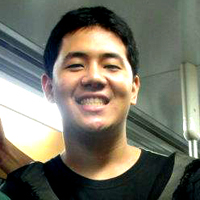SUMMARY
This is AI generated summarization, which may have errors. For context, always refer to the full article.
 The world was under a virtual lockdown last week. The world watched bloody Boston. Netizens were fed with a slew of information and misinformation on the twin explosions that rocked the renowned Boston Marathon last week.
The world was under a virtual lockdown last week. The world watched bloody Boston. Netizens were fed with a slew of information and misinformation on the twin explosions that rocked the renowned Boston Marathon last week.
Social media was at the forefront of the developing story. Fingers were pointed at different suspects whose names appeared in netizens’ most wanted list.
While many of us hold no direct attachments to the city, the stories which unfolded before our eyes nevertheless mixed with our feelings for the victims. This urged us to log on and immerse ourselves in the online rumble. The rumble caused a number of mistakes and wrong information to be published and shared.
The gravest mistake committed in the online world was naming Sunil Tripathi and a certain “Mike Mulugeta” as suspects of the Boston Marathon bombing.
Tripathi was a missing Brown University student who was named as the bomber by a netizen who went to high school with him because of his resemblance to the published picture of one of the Boston Marathon bombers, later identified as 19-year-old Dzhokhar A. Tsarnaev.
It only took a few minutes for this mistake to circulate worldwide. The mistake led to the Tripathi family’s breakdown as netizens hurled insults at them despite their search for their missing son for over a month. It also reinforced stigma on the bombing suspects.
“It was not Tripathi,” the authorities declared as they tried to freeze the uncontrollable circulation of online suspicion.
As for Mulugeta, his or her name became notorious after a tweet by a certain Carcel Mousineau said that a police official read that name on the police scanner. However, the police did not even state that his first name was Mike, but merely trying to spell out “M-U-L-U-G-E-TA,” and it started with “M as in Mike.”
Lessons
The Boston Marathon bombing manhunt on social media is just one of the events that push us to revisit the need for online responsibility as we consume and push stories with others.
While the feats of social media allow us to celebrate an extraordinary level of connectedness we depend on, it is inexcusable to forget the way these online phenomena affect personal and social locations.
Being netizens, we feel a false sense of connectedness as we search for things on the Internet other people have the answers to. We feel a remarkable link to a network of information which, we have to remember, we do not control.
Our demands for immediacy in this age makes us vulnerable, making it tempting to surrender to the emotional weight of the Internet crowd at the expense of fact-checking and validating stories.
Valuing our obligation to make media a more rational platform rests largely on the online interactions we constantly engage in. The way we netizens manage these interactions distinguishes our being defined as an intelligent social media crowd from being a social media mob.
Emotionally fashioned information
Virtually mediated communication loses its purpose when it fails to bridge the gap between the truth and misinformation.
This is because of the information commotion we experience as events transpire real-time. This emotional high of the web mob must clearly draw the line between intelligent crowdsourcing and emotional speculation.
While intelligent crowdsourcing challenges us to be sensitive and critical in the information we pick up and then share with the rest, emotional speculation ends in an investment of half-truths and finger-pointing as a result of pressure from netizens.
Finding truth
In finding the truth, especially in devastating events, emotions are often high. With the new media at our disposal, it is easy for misinformation to momentarily fill the gap of no information.
The social media itself as a medium becomes the message. The way we use it dictates our consumption of information as we try to either gain a better understanding of the whole picture. Otherwise we get caught in a web of fashioned truths.
This was part of Boston’s story. It was a story of one city that reflected the emerging challenges that continually mirror, shape, and reshape trends online.
A healthy grain of skepticism and some sense of restraint in dealing with online pressure can perhaps help us lessen miscalculations and the online din that often follows. – Rappler.com
John Patrick Allanegui is a graduate student of sociology and anthropology at the Ateneo de Manila University.
Add a comment
How does this make you feel?
There are no comments yet. Add your comment to start the conversation.